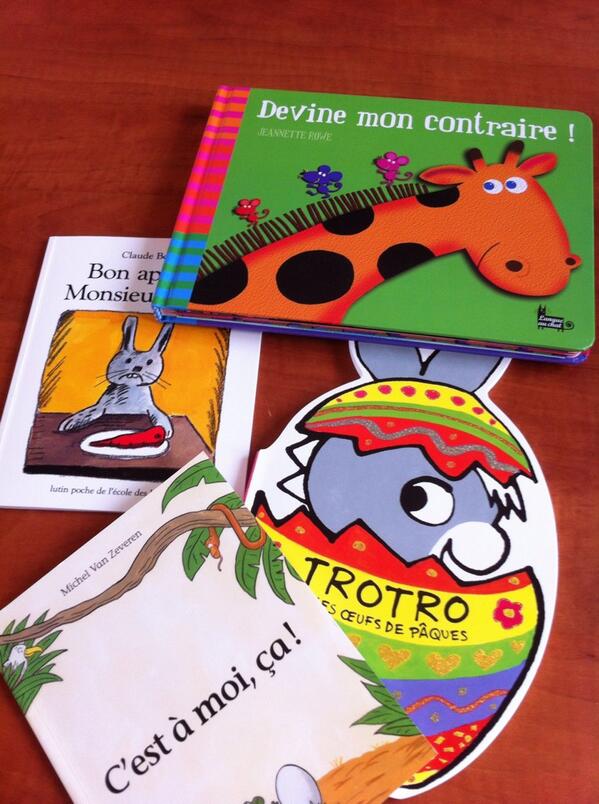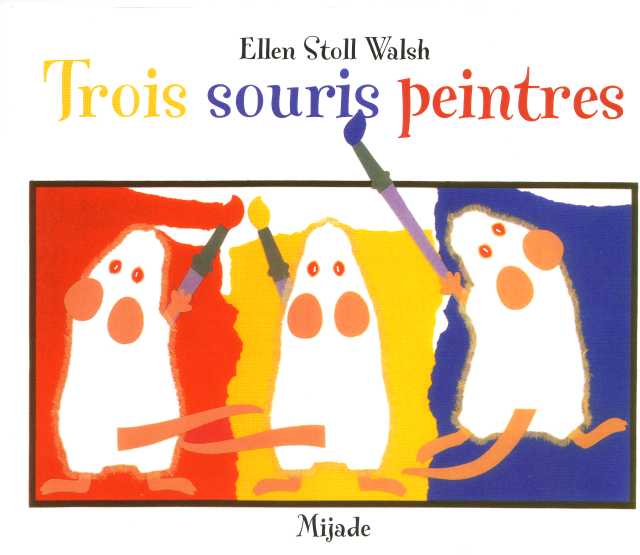Reading in the target language is great
Target language books are great !
Reading story books with target language learners was arevelation to myself back in about 1997! At the time my children were youngreaders themselves and it seemed crazy that I hadn’t made the link myselfbetween the types of colourful , engaging and repetitive stories that theyenjoyed and re-read and the type of books that my young target language learnerswould enjoy and ask to read again and again.
The delight back then on the Year 6 child’s face when we read lachenille qui fait des trous and the delight again when the Year 8 child realised I was reading Max et les maxi-monstres ! This was perhaps amystery to me at first (although I have always loved children’s books and amalso an avid reader of all literature )but then I realised it was because theyfelt they could understand and follow the whole story . They were revisitingbooks they had enjoyed in primary schools too! They even felt like competenttranslators of texts !

Now we work with a comprehensive SOW from Year 3 to Year 6 and try to integratetarget language story books as often as we can . A tweet this morning from my colleague @EWoodruffejust made me smile. She’s been to
back home in France and bought some more books that wewill be adding to our collection of stories next term. (Somewhat jealous really as love book hunting!)

The network news article from Sam the languages coordinatorat St Philips in Warrington caused me to think about how reading crosses boundariesas an effective learning tool and how all children can appreciate books ! Sam read and used my blog on Vive les livres for Day
and created activities where children looked at and appreciated English languagebooks but the children
categorised them with French language
Sometimes we use stories that we can sit, watch and listen to and appreciate with the children for example die kleineRaupe Nimmersatt (
on You tube )
by Eric Carle (actuallyread in German by the author
Les trois souris peintre s(
les trois souris peintres on You Tube )
: The story of three mice who want to be artists read in Fren
ch
The German song retelling the story of Hansel and Gretel (
on You Tube)
Behind each story is a learning purpose – so the hungry
caterpillar is a great

way to revisit days of the week and reinforce foodsbefore making your own diary of a week’s food or your own books of the simplifiedstories

The story about the mice allows us to listen for pleasure towatch the moving pictures and to reinforce our practise of colours with thechildren
And the Hansel and Gretel clip is an excellent tool to look
for nouns ,

identify verbs and develop the children’s ability to follow
andcomprehend a story .
Plus there’s the added bonus that they can practise thesong
and join in and perform this at a later date !
Here’s a link to the story books we will select from eachhalf term to support the children’s language learning in French. We have similar plans for Spanish and some German too .

And here are my thoughts upon whythese books are appropriate for the stage of the language learner andhis/her development in the target language. These books are the gateway for thechildren in Year 3 ,4, 5 and 6 to familiar language in unfamiliar contexts , tocreative opportunities to re-use language , to memorable stories with humoroustwists , to familiar stories that the children haven’t before realised exist in another languages as well as English, to other cultures and to non-fictionwith facts they really want to know or investigate! Our learners reactions enable us to see whatthey find interesting and engaging and encourage us to use text in ever more
creative ways .
We would certainly pinch the phrase from the DfE new POS andcall them “great”.
“great” to support learning ,
“great” to read with thechildren ,
“great” for independent reading
“great “ as a platform todevelop young language learners knowledge of a new language and its structure .

The icing on the cake are the “great” traditional target language stories such as roule galette when we celebrate epiphany in Year 4 les rats des villes et les rats des champs from Fontaine – a great favourite in “our town- your town” focus in year 5 or Astérix BDs we share with the children when we look at funfairs in Spring Year 6.
We start them early with target language books – we follow Uki from KS1 and puppets we make right through to a more grown up and argumentative Uki in Year 6 and we introduce the children to non-fiction too ……
With KS1 we enjoy traditional rhymes , tales and familiar stories . Here are my blogs on how we develop creative education of the ear learning opportunities in KS1 with
and
We are going on a bear hunt in KS1
We love "Mes p’tits docs "
Our learners enjoy fiction and non- fiction and in the target language,using books created for the target language young audience we can read and share facts about the target language countries .
From Year 4 onwards we will dip into and share mes p’tits docs – great non-fiction books to support our learning about the bakers and french bread, circus – what a French summer event , la station de ski ( a huge hit with our Y6 children!)
Books open our children’s minds to creativity .
Take a look at my blog about one of my all time favourite books : Chapeau
Books allow us to investigate core language through the engagement of the imagination – a choral performance of une histoire sombre

We can develop a class and group rewriting of keysentences in il y a un alligator sous monlit makes learning about rooms in the house so much more exciting!

We make creative DT displays based on Aaargh unearaignée

We can work with traditional tales combined with a more mature investigation of fairy tale charactersand fears through ” Même pas peur” .

Finally this year we have stepped out into trying to combine music andliterature -indeed great music Au carnaval des animaux from Mozart with a great storyabout these animals going to a fancy dress party – funnily enough called au carnavaldes animaux!

And guess what the target language results were great !
Pleasedon’t read anything sarcastic into this above statement .
We must select thebooks carefully , encourage younglearners to walk with us through stories , select books for their structure ortheir creative learning opportunities and then provide children with thesupported learning environment to step away from us and explore simple target languageaudience stories on their own.
As for meI will still be spending hours of pleasure in target language book shops findingthe next great book to use in our language teaching and learning .
Must check my diary for when I am nextabroad !
